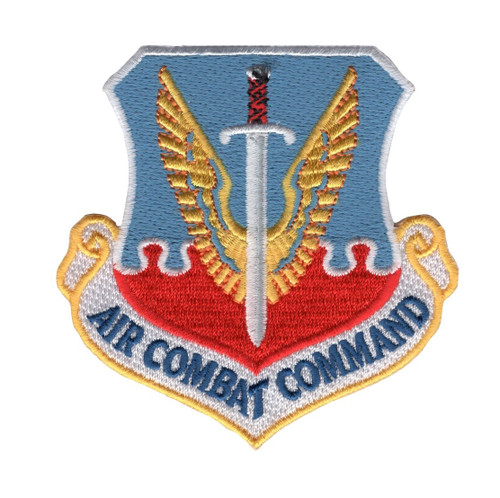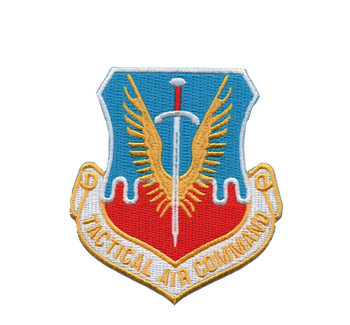Formations & Origins
The Air Combat Command (ACC) was formed on June 1, 1992, as part of a restructuring initiative by the U.S. Air Force. The creation of the ACC was part of the larger post-Cold War realignment, where the Air Force sought to streamline its operations and ensure that it could maintain the highest standards of combat readiness. The ACC was established by consolidating the air combat forces previously spread across various commands, with the goal of creating a more unified and efficient operational command capable of handling air combat operations in all theaters.
The ACC was tasked with overseeing a wide range of missions, from air superiority and close air support to strategic and tactical reconnaissance. It was charged with managing the Air Force’s combat forces, including fighter, bomber, and reconnaissance aircraft, ensuring that these assets were prepared for combat operations at a moment's notice. Additionally, the ACC was responsible for training, equipping, and maintaining the readiness of these units to ensure that the U.S. Air Force could maintain air dominance in any conflict.
The creation of the ACC was not just a matter of organizational restructuring; it was also about adapting to the changing nature of modern warfare. As the U.S. Air Force entered the 21st century, it had to be ready for a variety of combat situations, from conventional conflicts to asymmetric warfare. The ACC was designed to ensure that the Air Force was always prepared for any scenario.
Notable Commanders
Since its inception, the Air Combat Command has been led by some of the most respected and influential figures in U.S. Air Force history. One of the first commanders of the ACC was General Ronald R. Fogleman, who served as the head of the command from 1992 to 1994. His leadership during the formative years of the command was instrumental in shaping the ACC into the formidable force it is today. General Fogleman’s vision for air combat operations set the stage for many of the technological and tactical innovations that followed.
Another notable figure in the history of the ACC was General John P. Jumper, who served as commander from 1997 to 2000. General Jumper’s tenure was marked by significant advances in technology and operations, particularly with the development of the F-22 Raptor and the integration of advanced avionics into Air Force combat units. His leadership helped to modernize the Air Combat Command and solidify its role as the central hub for air combat readiness.
Throughout its history, the ACC has been led by commanders who have been deeply committed to the evolution of air combat tactics and ensuring that the U.S. Air Force remains at the forefront of air superiority, adapting to new challenges posed by both conventional and unconventional adversaries.
Major Campaigns/Operations
The Air Combat Command has been involved in numerous major campaigns and operations since its creation, each underscoring its crucial role in maintaining U.S. air dominance and executing combat operations worldwide. One of the most prominent examples is its involvement in Operation Desert Storm, the U.S.-led coalition effort to expel Iraqi forces from Kuwait in 1991. Although the ACC was officially formed after the operation, the lessons learned during Desert Storm were crucial in shaping its future.
Since its formation, the ACC has played a key role in virtually every major U.S. military operation. During Operation Enduring Freedom (2001–2014), the ACC provided critical air support in the campaign against the Taliban in Afghanistan. Its fighter aircraft, bombers, and reconnaissance planes ensured that U.S. forces had the air superiority necessary to operate effectively in a complex and challenging environment.
In Operation Iraqi Freedom (2003–2011), the ACC's aircraft were once again at the heart of the fight, conducting precision airstrikes, close air support missions, and strategic bombing. The command's ability to rapidly deploy combat aircraft and deliver effective firepower was instrumental in the success of the campaign.
The ACC has also been involved in numerous humanitarian operations, such as airlifting supplies and personnel to regions affected by natural disasters. Its ability to conduct air combat operations while also supporting peacekeeping and humanitarian missions has made it a versatile and indispensable component of U.S. military operations worldwide.
Specialized Role/Equipment
The Air Combat Command’s primary role is to provide combat-ready air forces, and it specializes in the operation and deployment of the Air Force’s most advanced and versatile combat aircraft. The ACC oversees a wide variety of aircraft, each designed for specific combat roles.
The F-22 Raptor, the world’s most advanced fifth-generation fighter, is one of the flagship aircraft of the ACC. Designed for air superiority, the F-22 is capable of engaging in both air-to-air and air-to-ground combat, making it a critical asset in ensuring U.S. dominance in contested airspace. The F-15 Eagle and F-16 Fighting Falcon are also integral parts of the command’s fighter fleet, offering versatility in both air combat and strike missions.
The B-1B Lancer, B-2 Spirit, and B-52 Stratofortress bombers make up the long-range, strategic bombing force of the ACC, capable of delivering precision strikes over vast distances. These bombers are essential in deterring adversaries and providing the U.S. military with the capability to project power globally.
In addition to fighter and bomber aircraft, the ACC is responsible for the operation of a variety of reconnaissance and surveillance aircraft, such as the U-2 Dragon Lady and the RQ-4 Global Hawk. These platforms are critical for gathering intelligence and providing real-time situational awareness to commanders on the ground, enabling them to make informed decisions in high-pressure combat situations.
Finally, the ACC operates advanced command and control systems, ensuring that air operations are seamlessly coordinated and that air superiority is maintained at all levels. The command is also responsible for integrating cutting-edge technology, such as stealth capabilities, advanced radar, and electronic warfare systems, into its fleet to maintain a technological edge over adversaries.
Acts of Heroism
The personnel within the Air Combat Command have been involved in countless acts of heroism, whether in combat or during humanitarian missions. Airmen from ACC squadrons regularly perform dangerous and high-risk operations, often under enemy fire, to ensure the success of combat missions.
One of the most notable acts of heroism occurred during Operation Desert Storm, when Captain Mike "Tex" McCauley, a pilot in the 33rd Tactical Fighter Wing, displayed extraordinary bravery. During a bombing run over Iraq, Captain McCauley’s aircraft was hit by enemy fire. Despite the damage, he continued the mission, and after releasing his payload, he successfully returned to base, all while keeping his plane under control and ensuring the safety of his crew.
ACC airmen also demonstrated immense bravery during Operation Enduring Freedom and Operation Iraqi Freedom, flying into hostile airspace to provide close air support for ground troops, conducting bombing raids against high-value targets, and rescuing personnel in perilous conditions. The courage and selflessness shown by these airmen in the face of danger reflects the values that the Air Combat Command instills in its personnel.
Legacy & Notable Achievements
The legacy of the Air Combat Command is defined by its unwavering commitment to air dominance and its central role in every major conflict involving the United States since its formation. The ACC has maintained a reputation for excellence in combat readiness, technological innovation, and the integration of advanced air combat systems into the Air Force’s operational doctrine.
The command's achievements are not limited to traditional combat operations. Its personnel have consistently demonstrated the ability to adapt to changing threats, conducting precision strikes in complex environments and ensuring that U.S. forces have the air superiority necessary to operate effectively in both conventional and unconventional warfare.
The integration of advanced technologies, such as stealth and precision-guided munitions, has further cemented the ACC's position as a leader in modern air combat. The command's success in maintaining combat readiness and pushing the boundaries of air warfare technology ensures that the U.S. Air Force remains a formidable force in the global arena.
Today, the Air Combat Command continues to play a vital role in defending the United States and supporting its allies, ensuring that the air superiority achieved through decades of hard work and innovation remains intact. The legacy of the ACC is one of excellence, adaptability, and unparalleled combat capability, cementing its place as one of the most important commands in the U.S. Air Force.






